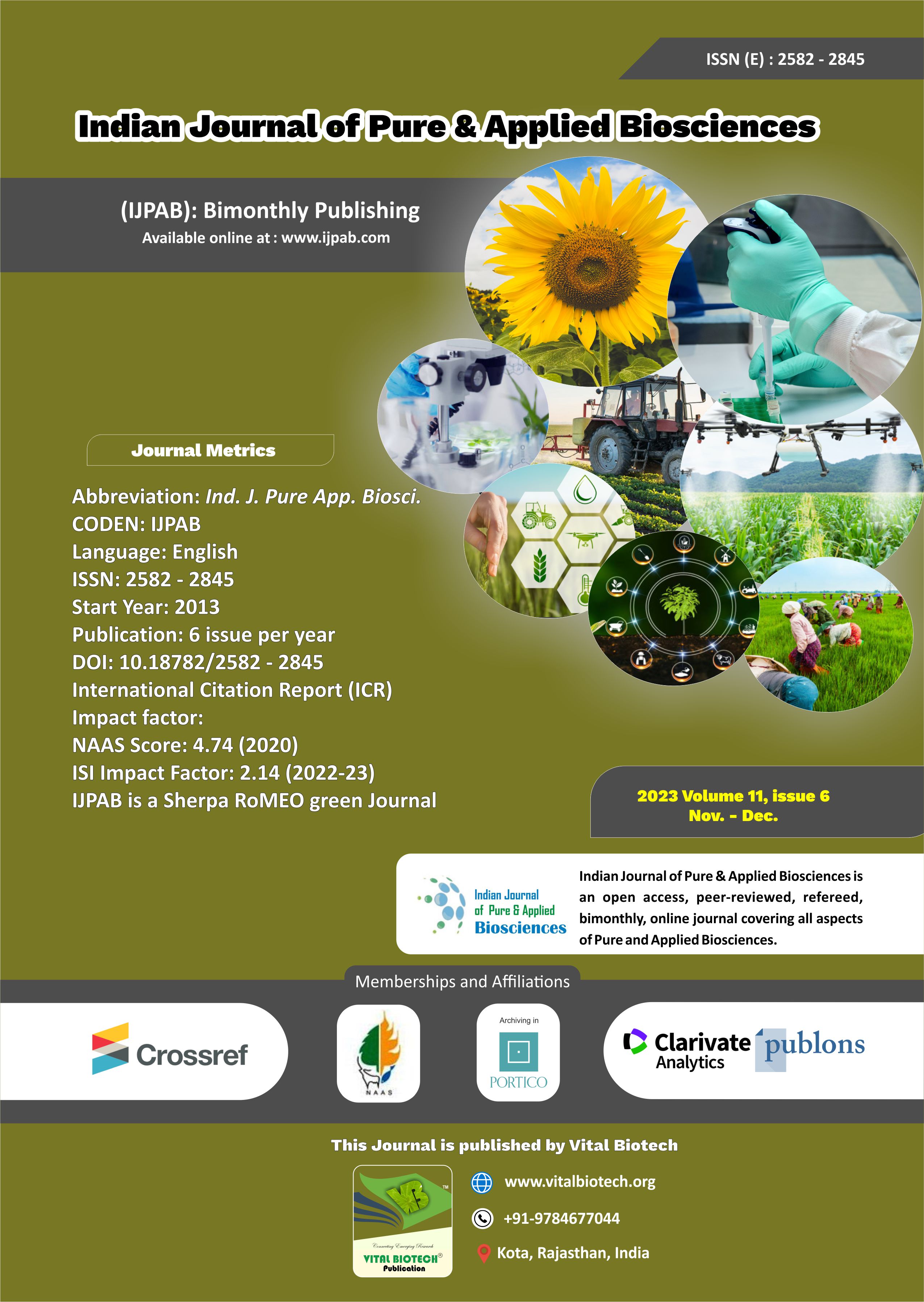-
No. 772, Basant Vihar, Kota
Rajasthan-324009 India
-
Call Us On
+91 9784677044
-
Mail Us @
editor@ijpab.com
Indian Journal of Pure & Applied Biosciences (IJPAB)
Year : 2023, Volume : 11, Issue : 6
First page : (68) Last page : (79)
Article doi: : http://dx.doi.org/10.18782/2582-2845.9036
Impacts of Water Logging on Soil Microbial Intentions and Mung Bean (Vigna radiata L.) Physiology
Abdul Hannan Afzal1* ![]() , Hassan Zubair2
, Hassan Zubair2 ![]() , Shahzad Abid3, Muhammad Shahzaib4, Muhammad Hassan2, Sarmad Khalid2, Muhammad Shoaib2, Aziz Ahmad2, Muhammad Zaib5
, Shahzad Abid3, Muhammad Shahzaib4, Muhammad Hassan2, Sarmad Khalid2, Muhammad Shoaib2, Aziz Ahmad2, Muhammad Zaib5
1Department of Plant Breeding and Genetics, 2Department of Agronomy,
University of Sargodha, Sargodha 40100, Pakistan
3Department of Agronomy, Bahauddin Zakariya University, Multan 60000, Pakistan
4Department of Plant Breeding and Genetics, PMAS Arid Agriculture University, Pakistan
5Department of Soil and Environmental Sciences, University of Sargodha, Sargodha 40100, Pakistan
*Corresponding Author E-mail: hannanafzal223@gmail.com
Received: 22.09.2023 | Revised: 30.11.2023 | Accepted: 10.12.2023
ABSTRACT
The mung bean (Vigna radiata L.) is an important pulse crop known for its high protein content and adaptability to tropical and subtropical regions, particularly in Asia. Despite of their importance as a source of protein, most noticeably that, waterlogging negatively affects their growth and yield. Waterlogging, resulting from factors like compacted soil and excessive irrigation, leads to hypoxic conditions and negatively affects various physiological and morphological aspects of mung bean plants. The impact of waterlogging on mung beans at different growth stages emphasises its detrimental effects on root growth, leaf area, chlorophyll content, photosynthesis, and biomass. Waterlogging disrupts nutrient uptake, causing deficiencies and hindering overall plant adaptation. The molecular responses and metabolic changes in mung beans under waterlogging stress can upset the shift to anaerobic metabolism and the synthesis of specific proteins. Microbial interactions in the rhizosphere soil and their influence on mung bean growth during waterlogging also play an important role in mung bean growth and yield. Tolerance mechanisms, including morphological adaptations and physiological changes, are explored, offering insights into selecting tolerant genotypes. Agronomic strategies, such as the use of cytokinin and gibberellin acid used for mitigating waterlogging effects and enhancing mung bean resilience.
Keywords: Waterlogging, molecular response, physiological adaptations, morphological Changes, nutritional uptake
Full Text : PDF; Journal doi : http://dx.doi.org/10.18782
Cite this article: Afzal, A.H., Zubair, H., Abid, S., Shahzaib, M., Hassan, M., Khalid, S., Shoaib, M., Ahmad, A., Zaib, M. (2023). Impacts of Water Logging on Soil Microbial Intentions and Mung Bean (Vigna radiata L.) Physiology, Ind. J. Pure App. Biosci.11(6), 68-79. doi: http://dx.doi.org/10.18782/2582-2845.9036


